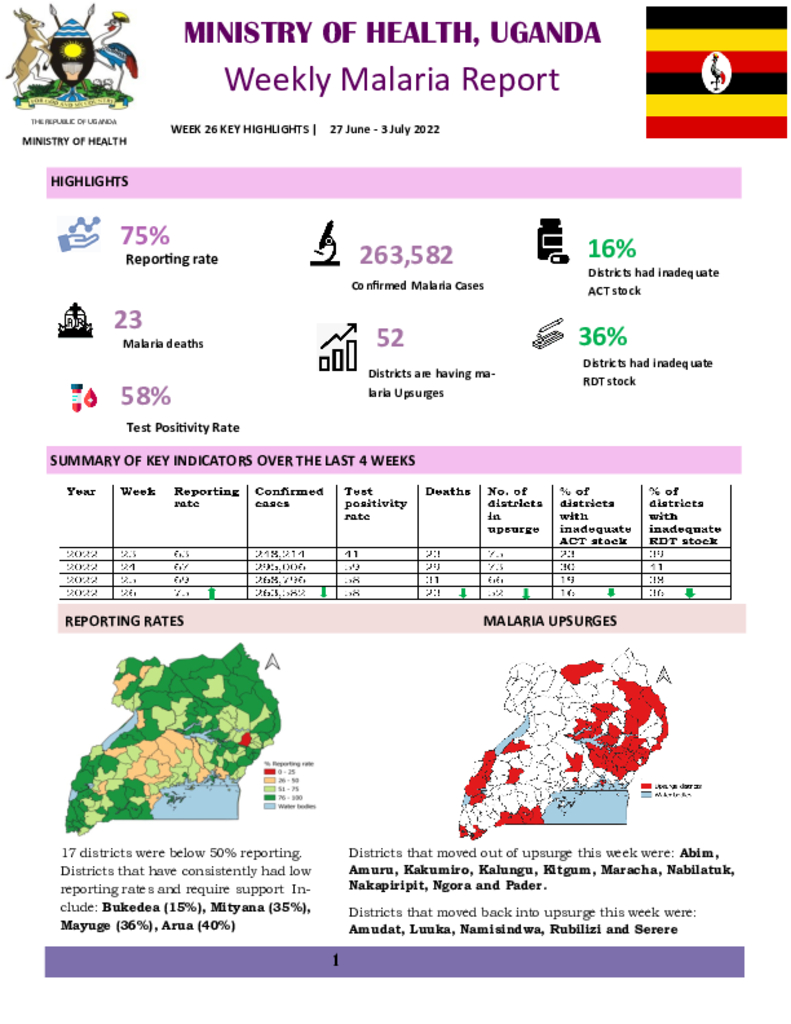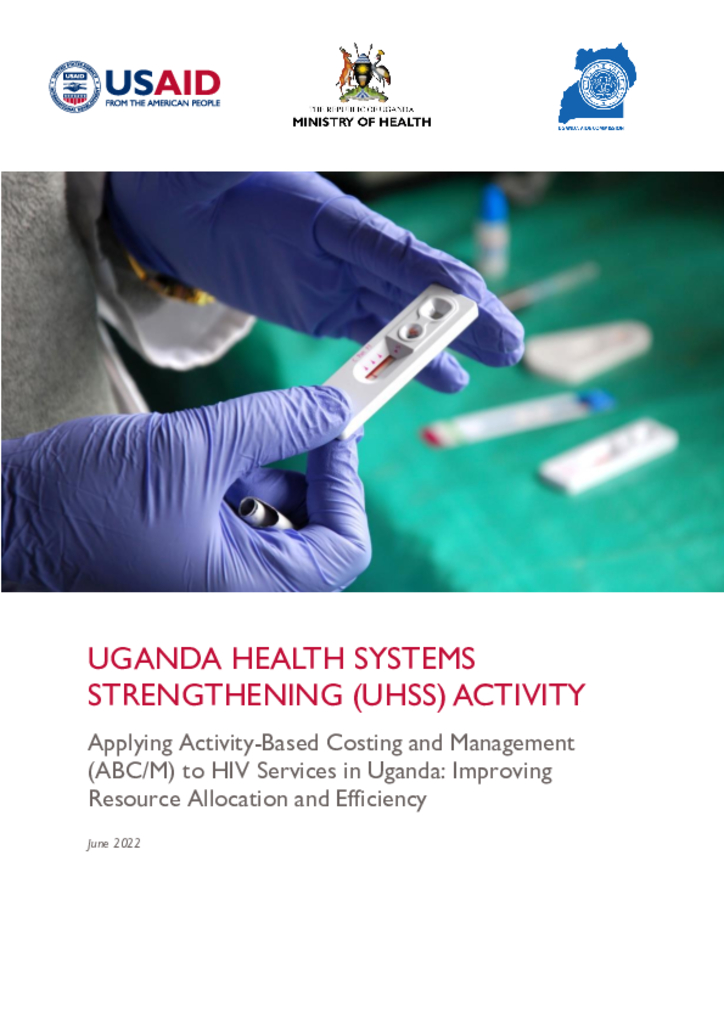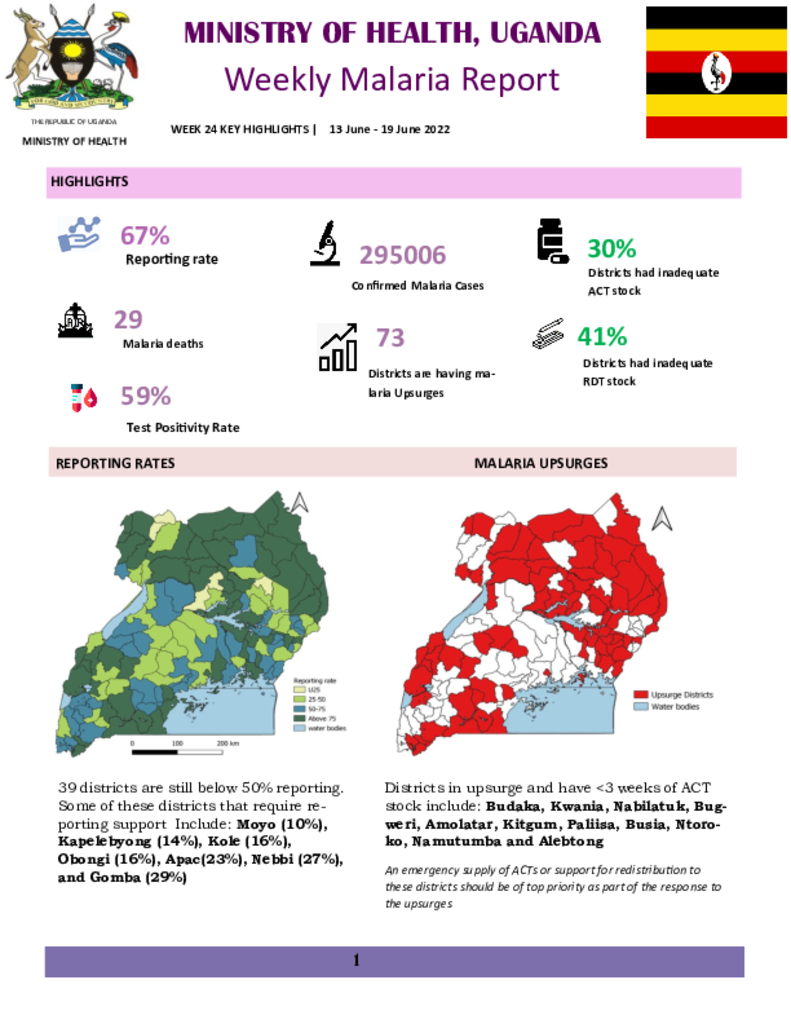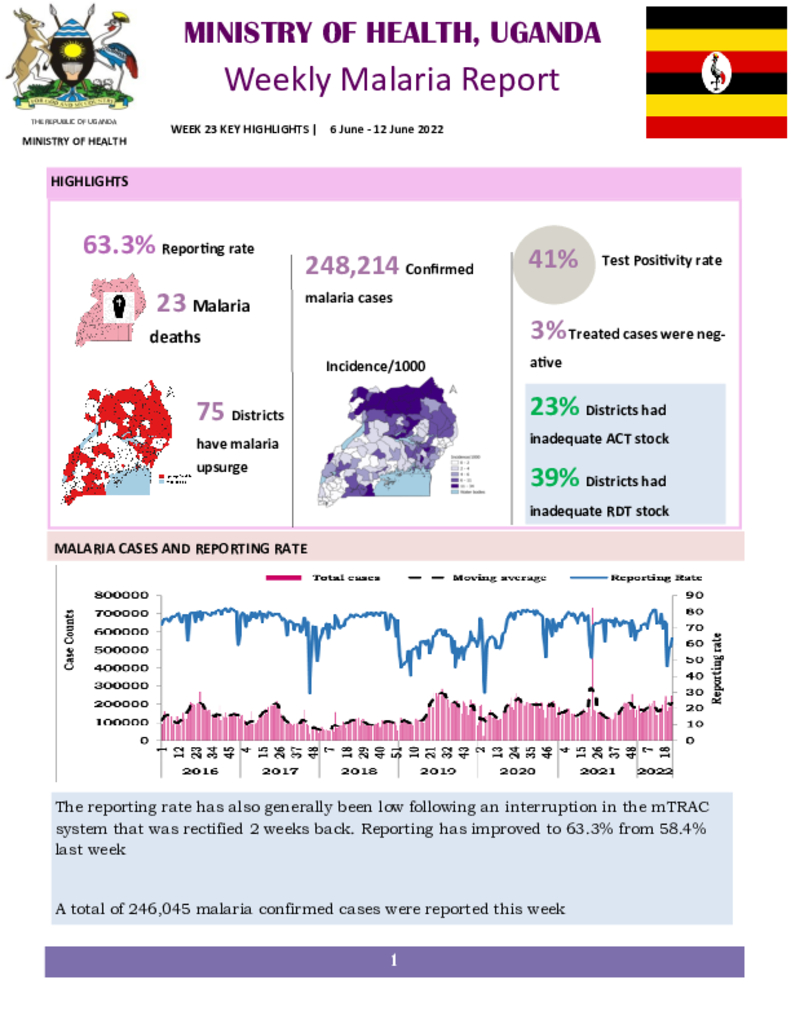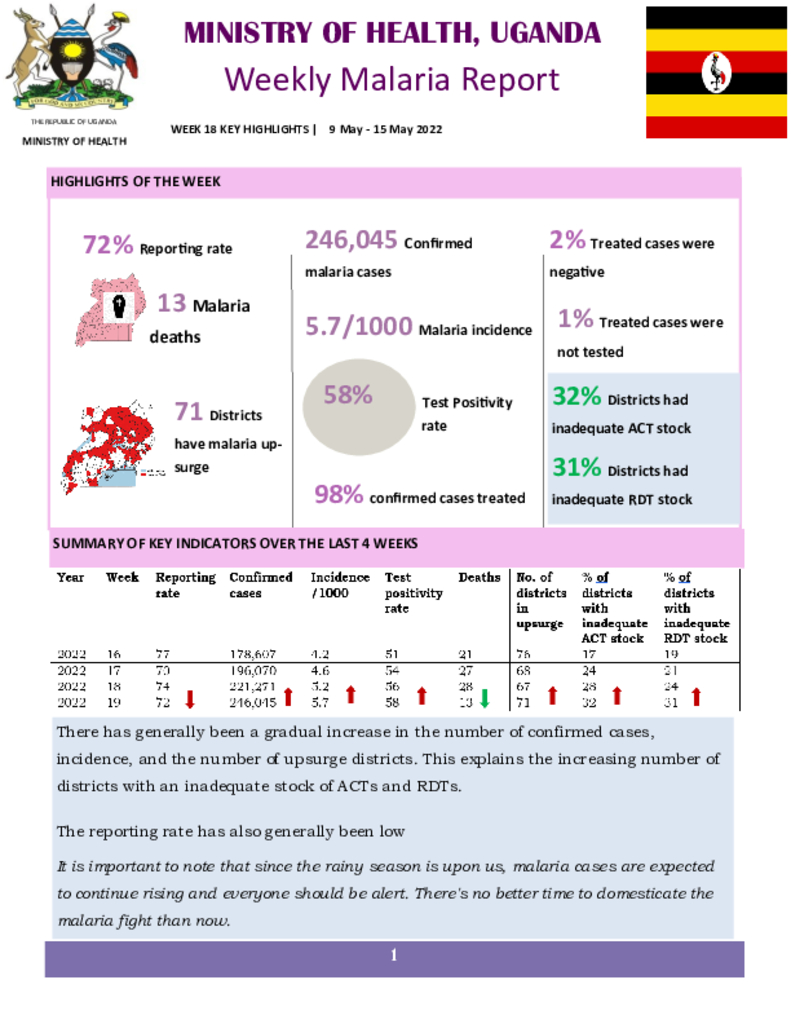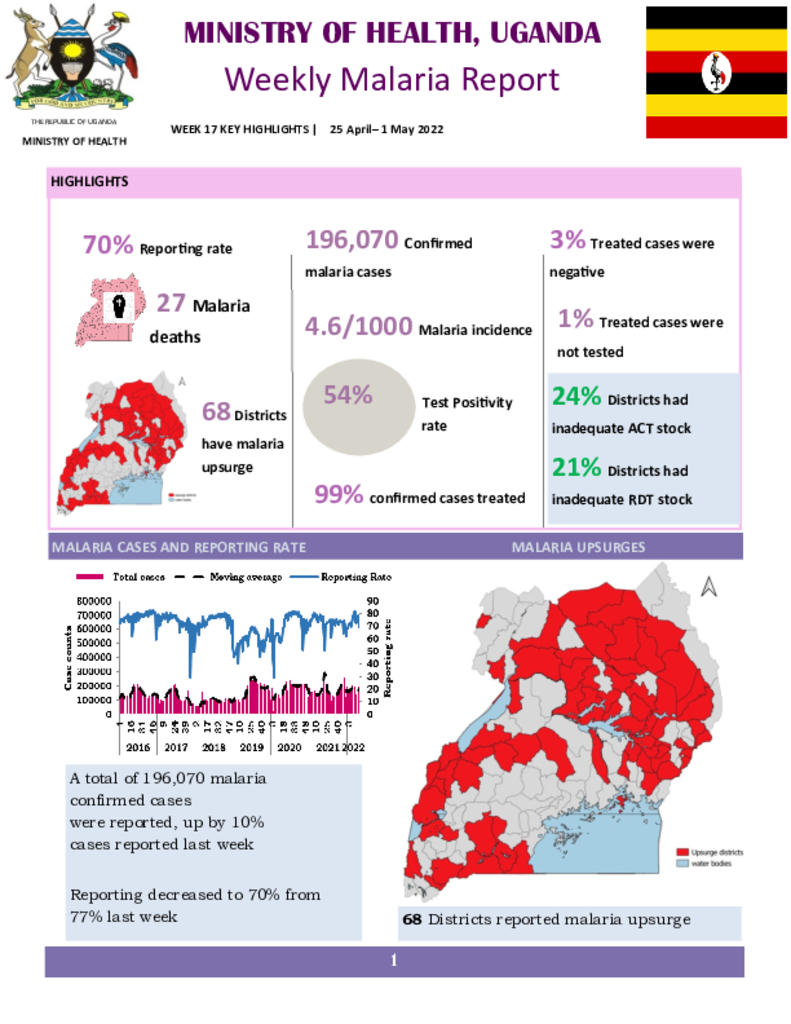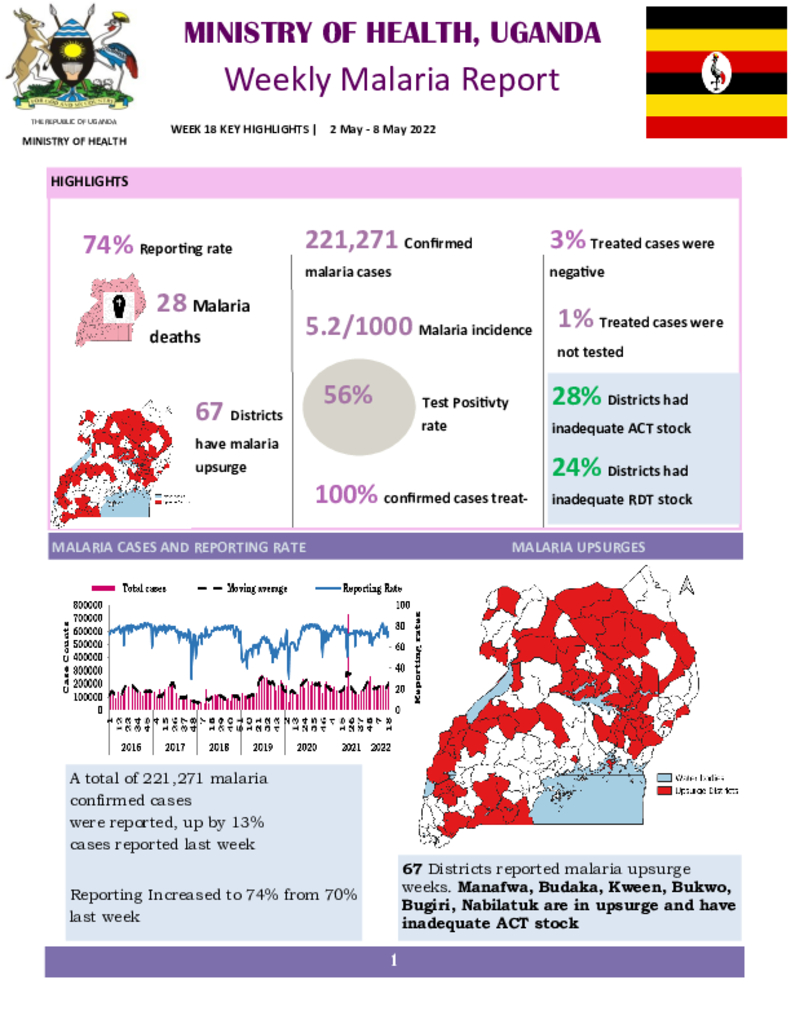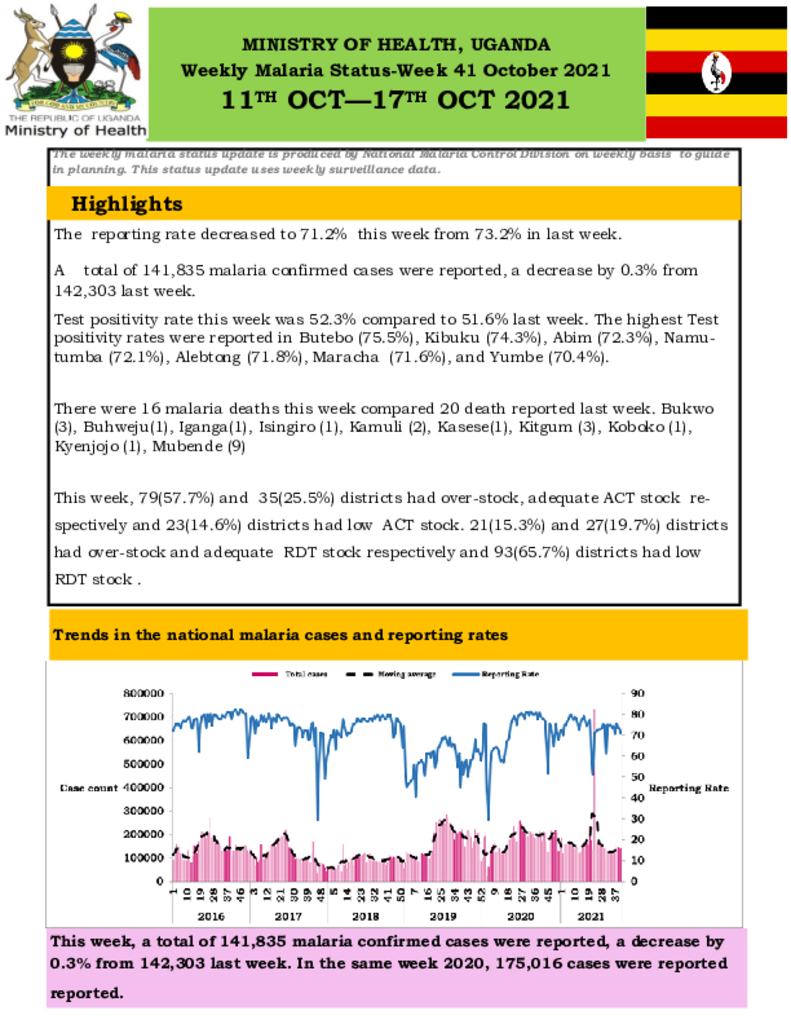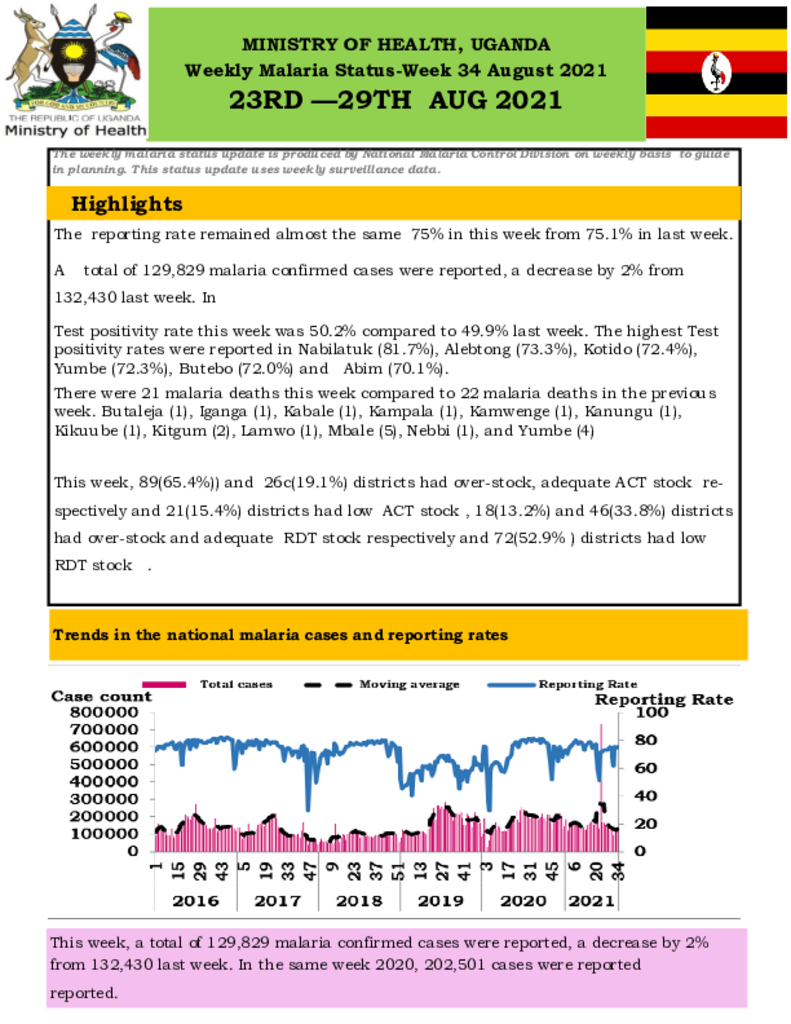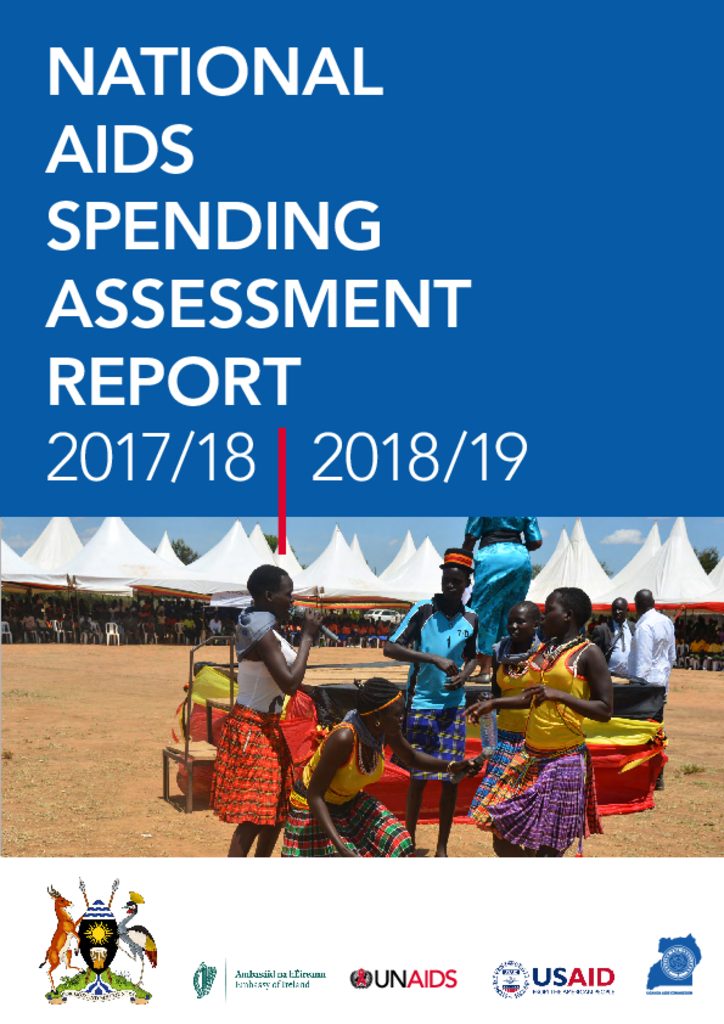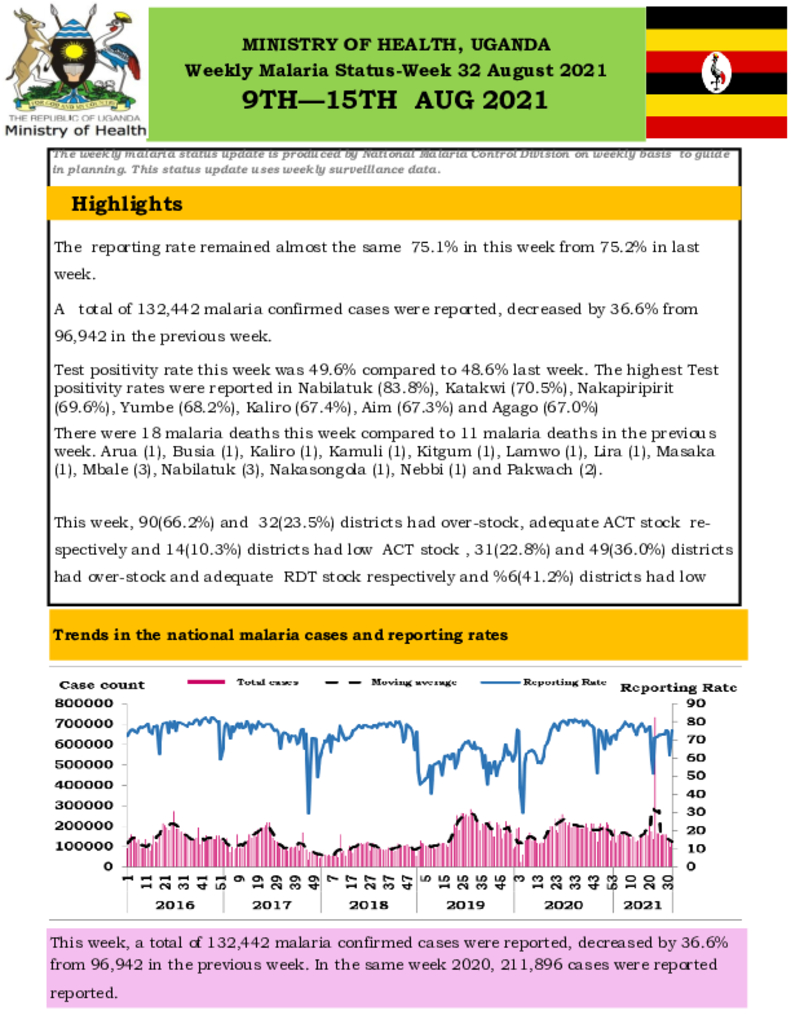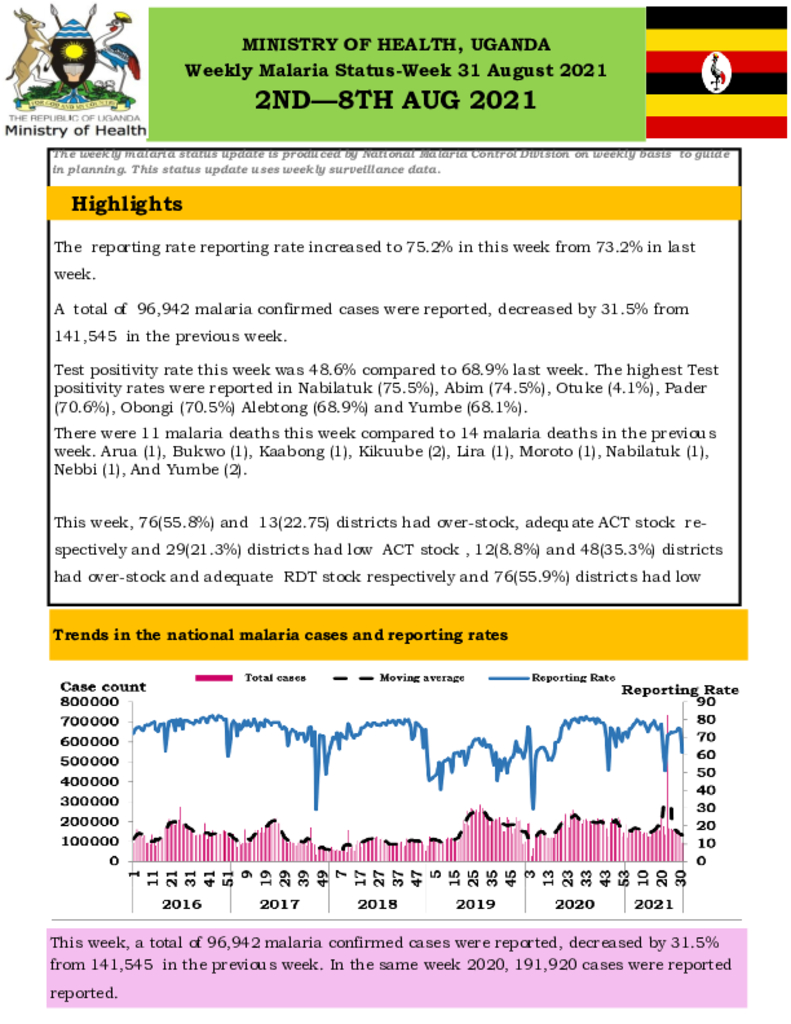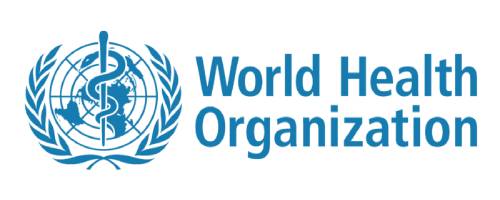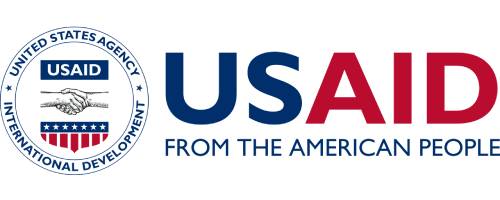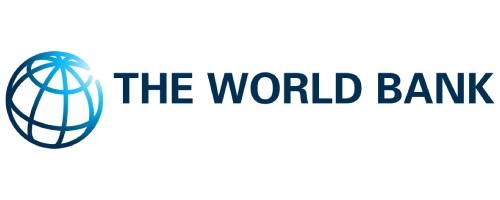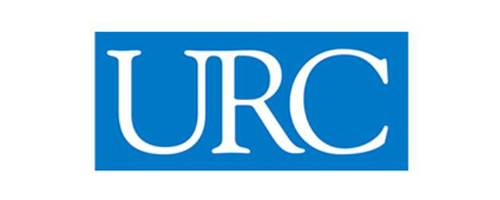Malaria key highlights for week 26, 2022
This report, which concludes Phase 1 of the ABC/M application, provides a retrospective baseline of HIV costs for one year at four different costs levels: facility, community, client, and above-site.
Ministry of Health, Malaria key highlights for week 24
The statistical brief is a Ministry of Health, weekly report on Malaria.
There has generally been a gradual increase in the number of confirmed cases, incidence, and the number of upsurge districts. This explains the increasing number of districts with an inadequate stock of ACTs and RDTs.The reporting rate has also generally been low It is important to note that since the rainy season is upon us, malaria cases are expected to continue rising and everyone should be alert. There's no better time to domesticate the malaria fight than now.A total of 246,045 malaria confirmed cases were reported, up by 11% cases reported last week. Reporting reduced to 72% from 74% last week. 71 Districts reported malaria upsurge this week.
Districts in upsurge and have <3 weeks of ACT stock include: Budaka, Kween, Nabilatuk, Bugiri, Amolatar, Ntoroko, Namutumba and Alebtong.
A total of 196,070 malaria confirmed cases were reported, up by 10% cases reported last week Reporting decreased to 70% from 77% last week 68 Districts reported malaria upsurge Malaria incidence increased to 4.6/1000 this week from 4.2/1000 last week. This week, malaria incidence was highest in Maracha (17/1000), Lamwo (15/1000), Pader, Omoro, Otuke, Bundibugyo & Kaberamaido (14/1000), Madi Okollo & Dokolo (13/1000). Test positivity rate 54% compared to 51% last week.
A total of 221,271 malaria confirmed cases were reported, up by 13% cases reported last week Reporting Increased to 74% from 70% last week 67 Districts reported malaria upsurge weeks. Manafwa, Budaka, Kween, Bukwo, Bugiri, Nabilatuk are in upsurge and have inadequate ACT stock Malaria incidence increased to 5.2/1000 this week from 4.6/1000 last week. This week, malaria incidence was highest in Lamwo (22/1000), Pader & Maracha (18/1000), Otuke, Dokolo & Madi-Okollo (17/1000), Kaberamaido, Zombo & Amuru (16/1000), Bundibugyo (15/1000), Kibuuku (14/1000) and Omoro, Kyotera and Adjumani (13/1000). Test positivity rate 56% compared to 54% last week.
The reporting rate decreased to 71.2% this week from 73.2% in last week. A total of 141,835 malaria confirmed cases were reported, a decrease by 0.3% from 142,303 last week. Test positivity rate this week was 52.3% compared to 51.6% last week. The highest Test positivity rates were reported in Butebo (75.5%), Kibuku (74.3%), Abim (72.3%), Namutumba (72.1%), Alebtong (71.8%), Maracha (71.6%), and Yumbe (70.4%). There were 16 malaria deaths this week compared 20 death reported last week. Bukwo (3), Buhweju(1), Iganga(1), Isingiro (1), Kamuli (2), Kasese(1), Kitgum (3), Koboko (1), Kyenjojo (1), Mubende (9)
The reporting rate remained almost the same 75% in this week from 75.1% in last week. A total of 129,829 malaria confirmed cases were reported, a decrease by 2% from 132,430 last week. In Test positivity rate this week was 50.2% compared to 49.9% last week. The highest Test positivity rates were reported in Nabilatuk (81.7%), Alebtong (73.3%), Kotido (72.4%), Yumbe (72.3%), Butebo (72.0%) and Abim (70.1%). There were 21 malaria deaths this week compared to 22 malaria deaths in the previous week. Butaleja (1), Iganga (1), Kabale (1), Kampala (1), Kamwenge (1), Kanungu (1), Kikuube (1), Kitgum (2), Lamwo (1), Mbale (5), Nebbi (1), and Yumbe (4)
The current assessment was conducted in 2020 for the years 2017/18 and 2018/19. These efforts provide indicators on HIV and AIDS financing, allowing international comparability and offering key data to monitor Uganda’s HIV and AIDS goals. The current NASA will be useful during the implementation of the new National Strategic Plan for 2020/21 to 2024/25
The reporting rate remained almost the same 75.1% in this week from 75.2% in last week. A total of 132,442 malaria confirmed cases were reported, decreased by 36.6% from 96,942 in the previous week. Test positivity rate this week was 49.6% compared to 48.6% last week. The highest Test positivity rates were reported in Nabilatuk (83.8%), Katakwi (70.5%), Nakapiripirit (69.6%), Yumbe (68.2%), Kaliro (67.4%), Aim (67.3%) and Agago (67.0%) There were 18 malaria deaths this week compared to 11 malaria deaths in the previous week. Arua (1), Busia (1), Kaliro (1), Kamuli (1), Kitgum (1), Lamwo (1), Lira (1), Masaka (1), Mbale (3), Nabilatuk (3), Nakasongola (1), Nebbi (1) and Pakwach (2).
The reporting rate reporting rate increased to 75.2% in this week from 73.2% in last week. A total of 96,942 malaria confirmed cases were reported, decreased by 31.5% from 141,545 in the previous week. Test positivity rate this week was 48.6% compared to 68.9% last week. The highest Test positivity rates were reported in Nabilatuk (75.5%), Abim (74.5%), Otuke (4.1%), Pader (70.6%), Obongi (70.5%) Alebtong (68.9%) and Yumbe (68.1%). There were 11 malaria deaths this week compared to 14 malaria deaths in the previous week. Arua (1), Bukwo (1), Kaabong (1), Kikuube (2), Lira (1), Moroto (1), Nabilatuk (1), Nebbi (1), And Yumbe (2).
